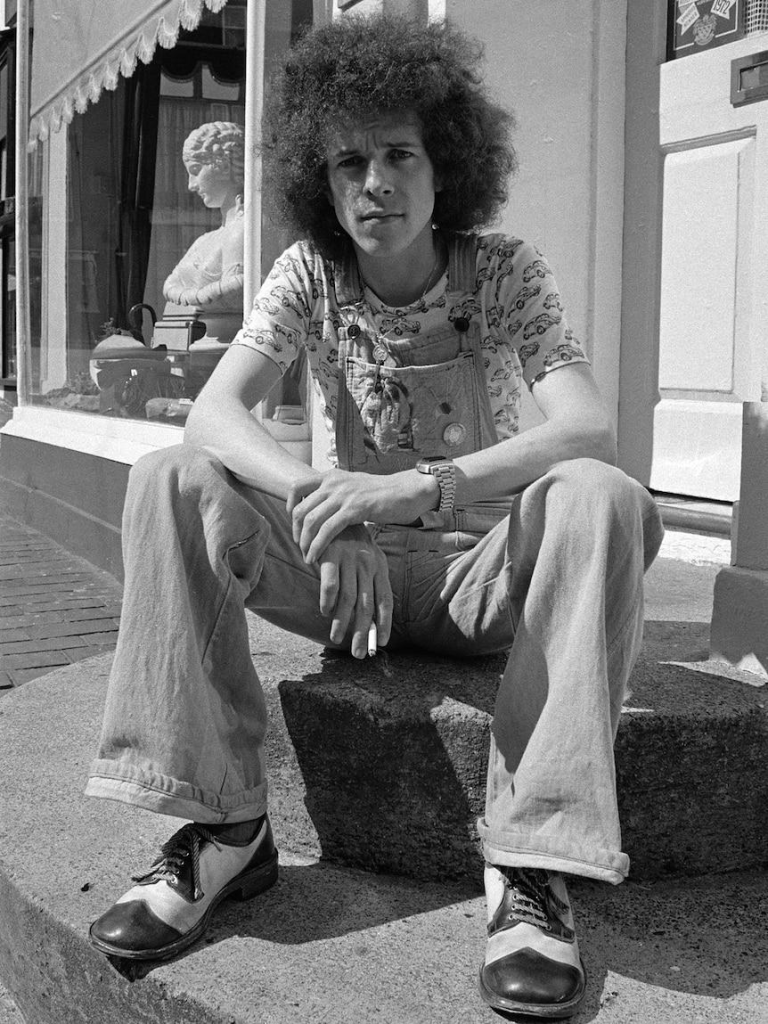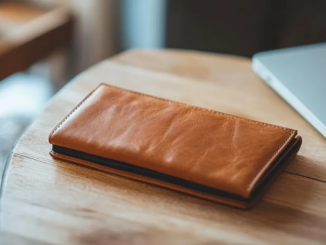“I look at my role as being a friend of Canberra Hospital, I can bring some pleasure and happiness sometimes to people who are really in difficult times in their lives.”
With backing music from a Bluetooth speaker, Sayer croons his way around the cancer wards, making a human connection with everyone he comes across.

Canberra Region Cancer Centre Operations Manager Caroline McIntyre says Sayer’s visits are typically kept a surprise for patients and staff.
“He’s always come in so discreetly,” she says.
“Normally it’s just very quiet, he comes up in the back lift and says hello to literally everybody.
“Some of them are doing it tough, and to have a little bit of joy and light – it really gives them a lift.
“What makes me happy is to see people getting chemo on their feet dancing.”
Jamming with Jimi Hendrix, Countdown and the Troubadour
Originally a graphic designer by trade, English-born Leo Sayer rose to pop prominence in London in the late 1960s, as a singer-songwriter – and was soon adopted by Australia as an honorary son after his first tour here in 1974.
He went on to become an Australian citizen in 2009.
Sayer was a regular on ABC TV’s Countdown during the 70s and 80s, performing chart-toppers like “You Make Me Feel Like Dancing”, “When I Need You”, “More Than I Could Say” and “Orchard Road”.

He blushingly admits they were wild days – when he didn’t always live up to his “good-guy” public persona.
“It was mad, I mean, Top of the Pops in England, Countdown over here,” he says.
“You were mobbed by the fans, I remember being dragged out of a limousine the first tour that I came here, and then speaking to crazy people like Molly Meldrum on TV and trying to sort of like take it all in.”
It seems hard to believe – the petite, well-spoken singer, with a mane of curly hair that inspired changing his name from Gerard to Leo – beating off mobs of screaming fangirls.
Sayer circulated in superstar company, becoming close friends with former Beatles George Harrison and Paul McCartney, collaborating with Roger Daltrey of The Who, and even sharing a sly cigarette or two with John Lennon and Yoko Ono who had a flat above his design studio.
“I met Jimi Hendrix right at the start of his career. I actually jammed with him, playing the harmonica, and him playing the guitar,” he says.
Recalling his 1975 opening night at the famous Troubadour Club in Los Angeles, he looked up to see an intimidating line-up of fans in the front row.

“It was David Bowie, Elton John, and ‘The Fonz’ [Henry Winkler].”
Alongside them: John Cleese, Mick Jagger, Bernie Taupin, and comedian Marty Feldman.
“We never thought it would last, we were adapting to things around us, writing songs about things that are around us,” he says.
“And we thought they were only for our generation — so the amazing thing is my music’s become like a fine wine, where you lay it down and years later, it becomes a collector’s item.
“We’re in an age where the music that I make, young kids are actually latching onto it now, and they’re finding that that generation and that style of music we made is as current now as anything.”
Sayer’s health battles, still spreading hope at 76
Leo Sayer says his hospital charity work caps off a career dedicated to providing joy through music.
“It’s a nice piece of synchronicity really, because I was born in the grounds of a hospital in Shoreham by Sea in Sussex, near Brighton in England,” Mr Sayer said.
“I suppose I’ve always felt comfortable in hospitals and being around hospitals.
“Growing up, my dad was a hospital engineer, Mum was a nurse, my sister was a matron.”

Sayer has health struggles of his own, including three stents in his heart, which help him have a genuine connection to the hospital patients he entertains.
“[My music] is providing something that isn’t taking away from any of the treatment that’s going on. It’s providing something that’s just putting a smile on peoples’ faces.
“Music is communication and that’s what this is all about, we’re communicating, we’re making people feel better.
“We’re not healing people with music, but we are making them feel better about their healing.
“To sell out Canberra Hospital will do me fine.”
Palm Readers Are Freaking Out! What Does That ‘M’ Mean for You?
Have you ever looked at your palms and wondered what all those lines mean?
If you ask a palm reader, they will tell you that each line has its own special meaning. If you have lines that connect to form the letter M, you are part of a small group of less than 2% of people, including famous names like Meghan Markle, Hillary Clinton, and Robert De Niro. These individuals are believed to have unique qualities that set them apart.
Keep reading to find out what this M shape means on your palm!
Like fingerprints, the lines on your palms are unique to you. No one else has the same patterns. These lines are thought to give hints about your personality and potential life experiences.
Palmistry is an ancient practice where people interpret the lines, shapes, and features of hands, especially the palms. It is considered more of an art than a science. The lines do not predict the future, but they can provide insights into the quality of your life.
Here are the major lines and what they mean:
– **Heart Line:** This line shows your emotional health and relationships. Its shape can reveal how you feel about love and intimacy.
– **Head Line:** This line represents your thinking and decision-making. The length and curve can show whether you are more analytical or creative.
– **Life Line:** Many people think this line shows how long you will live, but it actually reflects your vitality and life experiences. It curves around the base of your thumb.
– **Fate Line:** This line indicates your life path, career, and destiny. A strong fate line may mean you have a clear purpose, while a faint or missing line might suggest you are flexible in your life choices.
– **Sun Line:** This line is linked to fame, creativity, and success. A clear sun line can suggest you will gain recognition for your talents.
If the heart and head lines come together to form an M shape, palm readers believe it shows that you are very gifted and special.

In palmistry, an M shape on your palm shows that you have special intuition, insight, and the potential to be a leader.
This marking is also called the Simian line. It is seen as a sign of a strong personality and suggests that a person can overcome challenges with determination.
People with an M shape tend to be good judges of character, like human lie detectors who can easily spot someone who is being dishonest.
Only 1 to 2% of the population has this unique marking on their palms.
Here’s what it means if you have the Simian line on your hand:
– **Intuition and Insight:** People with an M shape are believed to have strong intuitive abilities. They may be good at reading situations and understanding people.
– **Leadership Qualities:** This marking can suggest that someone has a natural ability to lead and inspire others.
– **Balanced Personality:** It might indicate a balance between intellect (head line) and emotions (heart line). This balance allows for thoughtful decision-making.
– **Potential for Success:** Many palmists believe that having an M shape is a sign of potential success in different areas of life, including careers and relationships.
It’s also important to note that the M shape should appear on your non-dominant hand, which is the hand you don’t use for tasks like writing. For right-handed people, this means the lines on your left hand can indicate positive traits and gifts. If the lines appear on your dominant hand, it may not have the same meaning.
Gary Markwick, a palm reader, explained that people with Simian lines are “quite highly sensitive.” He added, “They’re very focused and determined to get what they want. But sometimes they can have tunnel vision, not noticing what is happening around them or who is nearby.”
Next, speaking about Meghan Markle, who has an M shape on both of her hands, Markwick said, “Some people just have a touch of that line, but Meghan has a Simian line on each hand…so it’s a double whammy. She could do great things.”
The Duchess of Sussex has many achievements. She is an actor, an author, and an advocate for social justice. She also co-founded Archewell with her husband, Prince Harry.



Leave a Reply